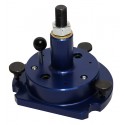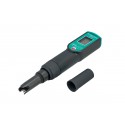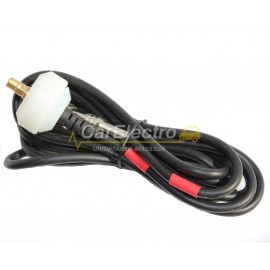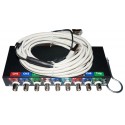
Monday to Friday 9:00am - 6:00pm
Saturday 10:00am - 4:00pm
Orders through the site - around the clock and seven days a week !
No products
Catalog
- SALES
-
Automotive scanners (Car Code Readers)
- Multivehicle
- Автосканеры AUTEL
- THINKCAR
- Автосканеры LAUNCH (Лаунч)
- Jaltest сканеры
- VAG
- Citroen, Peugeot
- Opel
- BMW
- Ford
- Renault
- Toyota
- Mercedes
- Volvo автосканеры
- Hyudai, Kia
- Honda, Acura
- FIAT, Alfa, Lancia
- SUBARU
- Mitsubishi
- VAZ, GAZ, Daewoo
- Diagnostic Adapter & Cable
- Tesla автосканеры
- Программатор электронных приводов (актуаторов) турбин
- Automotive Oscilloscope Kits
- Battery and electrical tools
- Injector cleaner and tester
- Smoke Leak Detectors
- PORTABLE VIDEO SCOPE
- Injectors Tools
- Engine timing tools
-
Engine tools
- Valves and Cylinder Head
- Glow Plugs tools
- Compression Testers
- Cylinder Leakage Tester
- Oil pressure testers
- Petrol engine Fuel injection (test sets)
- 333Головки для датчиков и форсунок
- 333Свечные головки
- 333Ремонт поршневого механизма
- 333Инструмент для трубопроводов
- Stroboscope/ Timing Light
- 333Система охлаждения
- Oil and fluid change
- 333Инструмент для ремонта двигателя
- Инструмент для сальников
- Tools for exhaust system
- Special automotive tools
- Maintaining and repairing Common-Rail System
- Tools for diagnostic and repairing trucks
- Tools for gearboxes (DSG, PowerShift, etc)
- Other instruments
- Air conditioning service equipment
- Power Tools (pneumatic)
- General wrenches and Click-type torque wrench
- Workshop equipment
- Metal Tools
- Lighting Sources
- Odometer Corrections
- CONSUMABLE SERIES
- Power Tools (electrical)
- Tools for body (body series)
- Motorcycle Tools
- Диэлектрический инструмент (VDE)
Vacuum sensor for working with the MT PRO measuring unit or Disko-2 oscilloscope.
The sensor is made in a polyamide housing. The sensor is calibrated and configured.
12 months warranty for vacuum sensor from Carelectro.com.ua store.
The vacuum sensor is used to record the shape of pressure pulsations in the intake manifold, in the crankcase ventilation system or the engine exhaust system. According to the oscillogram taken with the help of a rarefaction sensor, one can estimate:
- correct installation of the gas distribution mechanism (timing),
- uniform operation of the cylinders,
- check for misfires without disassembling the engine.
Characteristics of the vacuum sensor
- Measured medium - gas
- Operating pressure -100…100 kPa
- Maximum allowable pressure - 150 kPa
- Output connector - BNC
- Supply voltage - not provided
- Output signal type - analog
- Output voltage -5...5 V
- Recommended sampling rate - at least 10 kHz
- Operating temperature range -20…80℃
- Signal cable length - 2.5 m
- Housing material - polyamide
- Weight - 140 g
Vacuum sensor design
The body of the sensor is made of caprolon (polyamide), which makes it resistant to high temperatures, aggressive substances, and at the same time durable and lightweight. The sensor fitting is made of brass and allows connection to rubber tubes with an inner diameter of 4...7 mm. As a cord, a soft microphone cable with a dense shielding braid is used. The connector for connecting the sensor to the oscilloscope is BNC.
When developing the sensor, special attention was paid to the junction of the cable with the housing, as the most susceptible to damage. This monolithic connection prevents the cable from breaking due to accidental jerking, and also significantly extends its service life.
The basis of the sensor is a membrane with a piezoceramic plate, which interacts with pressure in the measured area. When the pressure increases, the plate bends, and when the pressure normalizes, it restores its shape. Since piezoceramic materials generate an electric charge during deformation, an electric voltage appears on the surface of the plate, which is almost proportional to the pressure on the material.
One feature of the sensor is that it can only be used to display dynamically changing pressure. They cannot measure static pressure. This is justified by the fact that as soon as the pressure becomes static, the piezoceramic stops deforming, and as a result, it stops generating an electric charge. At the same time, the charge that was stored on the plate is reduced due to leaks in the material and the meter. But in practice, this does not affect the diagnostic process in any way, since the pressure in all these systems changes constantly on a running engine. The use of piezoceramics as a measuring element can significantly reduce the cost of the sensor, without losing measurement accuracy, and also dispense with an external power source. The versatility of this technique allows it to be used on any internal combustion engine. The vacuum sensor does not require adjustment during operation.
The sensor was developed for use in conjunction with the MT Pro motor tester, but can also be used with any other oscilloscope, connects to any analog channel.
Diagnostic technique
During its operation, the engine produces a sequence of pressure pulsations in the intake and exhaust manifolds. This is because the intake and exhaust valves open and close in sequence, redistributing the flow of the air-fuel mixture and exhaust gases. A high pressure pulse appears in the exhaust system every time the exhaust valve opens and exhaust gases exit the combustion chamber. Similar processes occur in the intake manifold. No less informative is the pressure in the crankcase, where pressure pulsations indicate gas leaks through the piston rings. This pressure can be measured by connecting a gauge to the dipstick tube.
In all these cases, the pressure waveforms reflect the events that occur throughout the cycles of a four-stroke engine. In a healthy engine, pressure pulsations look the same and follow a specific pattern that can be displayed using a vacuum gauge and an oscilloscope. When the waveform deviates from the standard, it can be assumed that there is a problem.
- Гарантия: 12 мес












